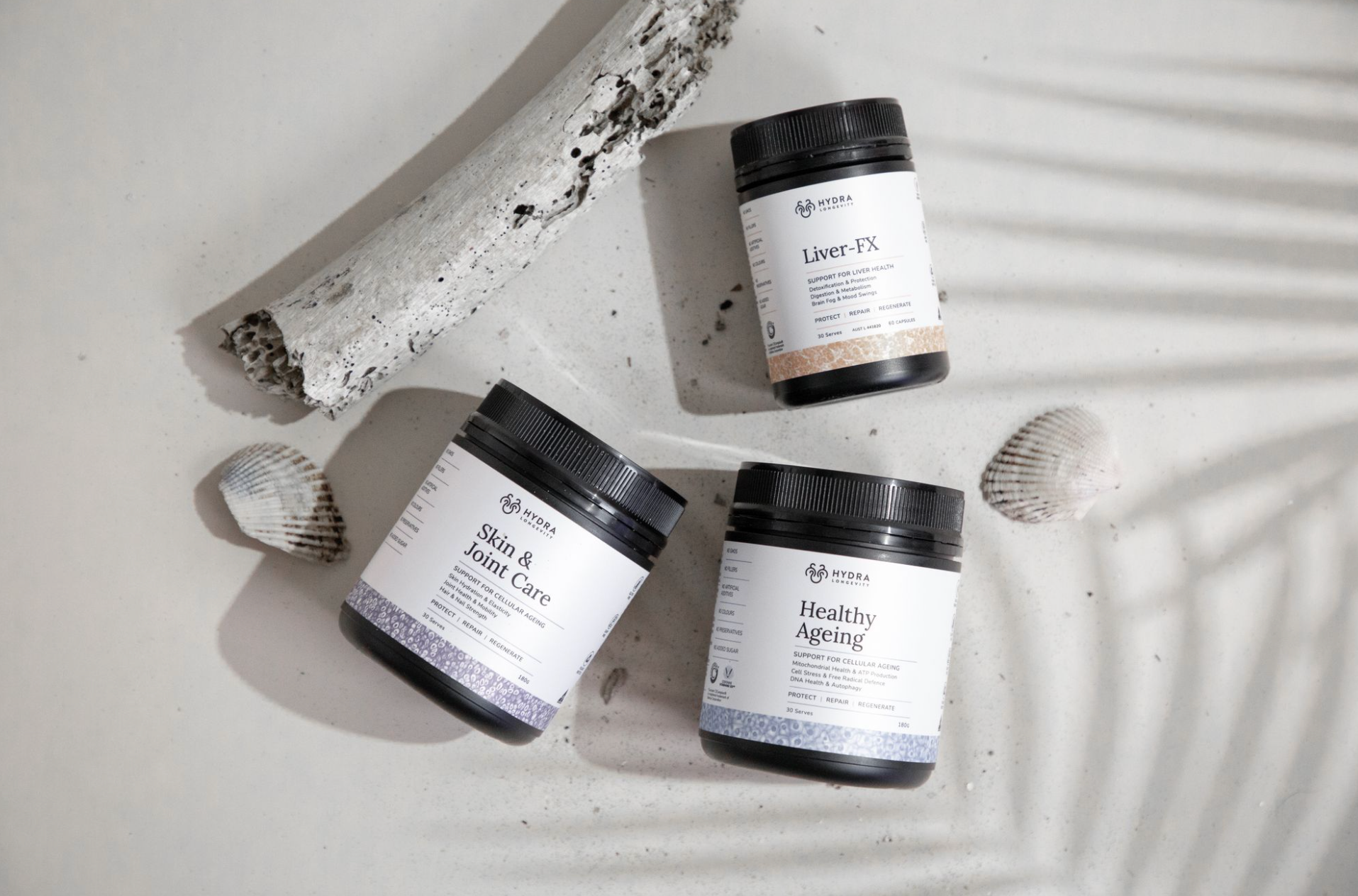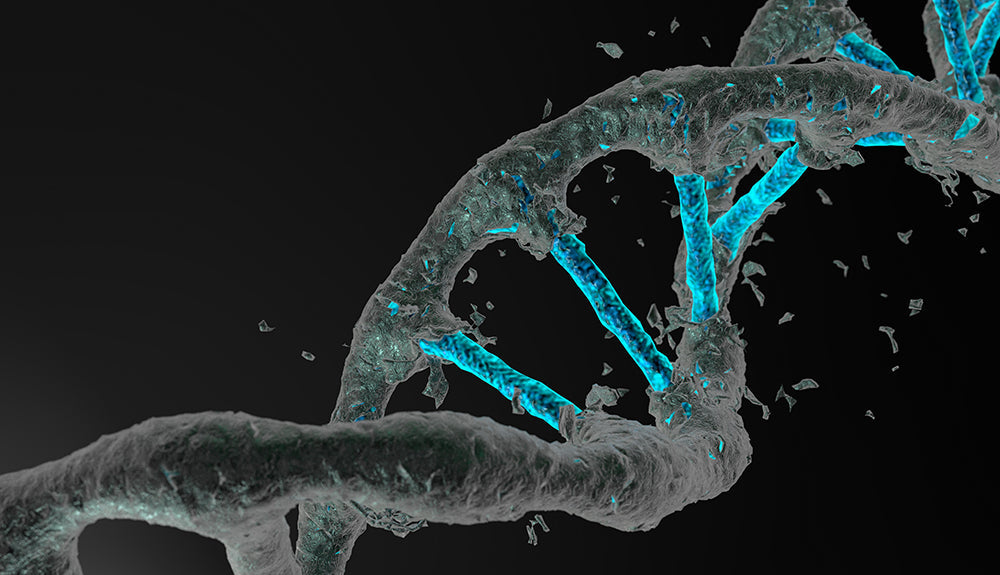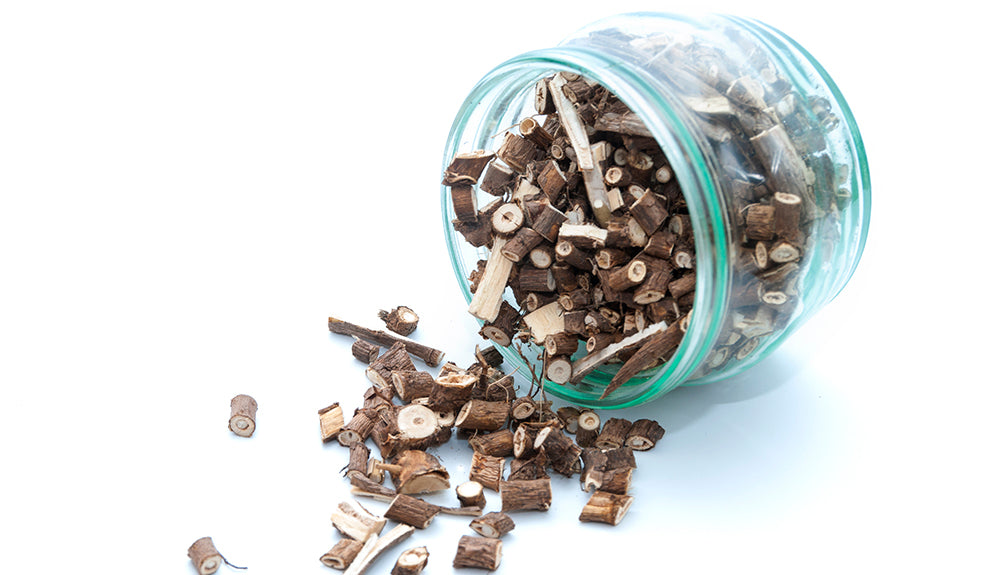DNA is the recipe for all life on Earth, by coding for proteins that the entire organism is made of. Our bodies have complex systems in place that make sure our DNA is organised properly and that each new cell gets a complete and unchanged copy. If the complex system involved in copying DNA fails, or if bad things are present in the environment, a mistake in the sequence of DNA can occur. These mistakes, called mutations, can happen at any phase of life, beginning with a growing baby’s first cells all the way to an adult’s mature cells. Some mutations cause serious health problems. In this article we'll highlight the many harmful hazards, called mutagens that cause mutations, and how we can protect our bodies from harm by maintaining a healthy lifestyle and avoiding unnecessary exposure to the types of hazards that can cause mutations.
What Is DNA?
Deoxyribonucleic Acid (DNA) is the molecular “recipe” that contains the instructions for an organism. DNA is made of four bases held together by a sugar-phosphate background. DNA is present in all living organisms and is responsible for helping pass on genes when cells divide.
Without DNA you would literally not exist! Neither would your pet, the trees in your yard, nor the meat, fruits, and vegetables you had for lunch. Anything that is or was alive can thank DNA! DNA is essentially a recipe that allows an organism to produce the basic materials (proteins) that make up each cell. Cells work together as tissues, organs, and organ systems to form an entire organism. DNA is made of four different molecules called bases: adenine (A), guanine (G), cytosine (C), and thymine (T). These four bases are strung together into a long chain. The backbone linking the bases is referred to as the “sugar-phosphate backbone,” because it is made up of alternating sugar and phosphate molecules. The order of the bases is referred to as the DNA sequence. Each set of three bases in the DNA sequence, that codes for one amino acid, is referred to as a condon.
Most codons code for one of the 20 amino acids that make up proteins. When the codon does not correspond to an amino acid, it is referred to as a stop codon, because it tells the cell that the end of the recipe has been reached and that production of the protein is done. DNA normally exists as two strands that wind into a shape called a double helix, with the bases on the two strands paired in a predictable way: A always pairs with T, and G with C (see Figure 1).

Figure 1 - Drawing of the way two strands of DNA pair together to form the double helix structure. The chemical structures of the bases are shown on the right, and they are color coded so that you can see, in the double helix, that A pairs with T and C pairs with G. The sugar-phosphate backbone is shown as a gray strip holding the bases together.
So, how many of these bases are there? Well, human DNA contains ~3 billion bases and about 99% of these bases are the same in all humans [1]. The 1% difference contributes to all of the unique traits and characteristics, such as eye color or health status, that vary between you and other people. The ways you are different from your family, friends, and work colleagues is due to your DNA sequences being different from theirs. About half of your DNA comes from each of your parents. More than 1% difference in DNA means that an organism is a different species than us. Chimpanzee DNA is between 1 and 2% different from human DNA (meaning that chimpanzees DNA is 98–99% identical to human DNA), making them our closest relatives in the animal kingdom [2].
What Is a Mutation?
Now that we understand some basics about DNA, we can talk about how the sequence can change. Sometimes our DNA sequence gets altered; this is called a mutation. There are different types of mutations, the changes in an organism's DNA sequence that may or may not alter proteins. For example, a base can be changed from what it was originally supposed to be to a different base (substitution), a base or bases can be deleted from the DNA (deletion), a base or bases can be added to the DNA (insertion), or a piece of DNA can be flipped (inversion) or repeated (duplication) (see Figure 2).

Figure 2 - Examples of common types of mutations. (A) The “normal” DNA sequence without a mutation, (B) an insertion, where a base is added, (C) a deletion, where a base is removed, (D) a duplication, where some bases are repeated, and (E) an inversion, where the order of bases is reversed.
While mutations always change the DNA sequence, they do not always cause a change in the resulting protein or an obvious effect on the organism. This can occur because most amino acids can be coded by two or more different codons. For example, the DNA sequence CAA codes for the amino acid valine, but so does the sequence CAG. So, if a substitution mutation changes the DNA sequence from CAA to CAG, a valine would still be added to the protein. Mutations that do not affect the protein are called silent mutations, because the DNA still makes the same protein that would be expected, and a person with a silent mutation would not even realize it. Other times, the change in the DNA sequence does affect the protein. This can happen, for example, if the DNA sequence CTC is changed to CAC. In this case, the amino acid glutamic acid would be replaced with valine. This specific sequence change is the mutation found in most people with sickle cell anemia, which is a very painful condition. Other times, a base is inserted into or deleted in the DNA sequence, which alters the way codons are read. This results in a large number of amino acids being altered, which is called a frameshift mutation. For example, if the original sequence AAA-CCC-GGG has a T added after the first A, it would now be read as ATA-ACC-CGG-G…; this would change the amino acid sequence from phenylalanine-glycine-proline to tyrosine-tryptophan-alanine. Notice how none of the amino acids in the protein made from the mutated DNA are the same as the original sequence. This would likely have a big impact on the protein’s function! A third possibility is that the mutated DNA sequence causes the protein production to stop early, so that the protein is shorter than normal. This is referred to as a nonsense mutation. If the DNA sequence AAA-ACC-AAA-AAA were changed to AAA-ACT-AAA-AAA, the protein sequence would change from phenylalanine-tryptophan-phenylalanine-phenylalanine to a single phenylalanine only, because the sequence ACT would act as a stop codon. So, the resulting protein would be shorter than normal and would not function properly.
Mutations can be passed down from the mother or father to the developing baby, and these are called inherited mutations. For example, if your mother had a mutation that caused her to be a lot shorter than average, you could inherit her mutation and be shorter than average yourself. If a person with an inherited mutation has a baby one day, that person could pass the mutation on to the next generation.
Other mutations happen after birth, and these are called acquired mutations. Acquired mutations are usually due to something in the environment and their effects are usually only present in the cells that were exposed to that environmental trigger and does not affect cells passed down to future offspring. So, some cells will have the mutation and other cells will have the normal sequence. For example, if you somehow got a mutation in the skin cells on your knee and then scraped your knee and had to make new cells to replace the ones that got hurt, those new cells would contain the mutation. However, the mutation would not be passed on to your future offspring, if you had a baby later.
What Are Sources of Mutations and How Can I Prevent Them?
Sunlight
Sunlight is one thing that can cause mutations. How does sunlight affect our DNA? Sunlight creates structures called thymine dimers, which means that two thymine (T) bases (T) on the same DNA strand become connected in an abnormal way, instead of correctly attaching to the complementary base adenine (A) on the opposite strand. Thymine dimers create kinks in the DNA shape (see Figure 3) [1]. These kinks make DNA difficult to copy, which can cause a mutation. In order to avoid thymine dimers from developing in our cells, it is very important to use sunscreen to help block ultraviolet A and B (UVA and UVB) rays.
 Figure 3 - The ultraviolet (UV) rays in sunlight cause the formation of thymine dimer mutations, which is when two thymines on the same strand of DNA bond together instead of correctly bonding with adenines on the opposite strand. This can cause mutations when making a copy of DNA for the next generation of cells.
Figure 3 - The ultraviolet (UV) rays in sunlight cause the formation of thymine dimer mutations, which is when two thymines on the same strand of DNA bond together instead of correctly bonding with adenines on the opposite strand. This can cause mutations when making a copy of DNA for the next generation of cells.
X-ray Radiation
Radiation used in X-rays (medical images) taken of teeth, bones, and other hard body parts has a very high energy level that can create molecules called free radicals. Free radicals are very unstable, and to become more stable, they can steal electrons from DNA, which can lead to mutations [4]. We can reduce exposure to X-ray radiation by using other forms of medical images when possible and wearing protective equipment to protect the body when x-rays are taken. If you have ever gone to the dentist and had an X-ray of your teeth, you probably remember having a heavy lead apron draped over your body. The lead apron protects the parts of the body that the dentist is not taking pictures of. Getting X-rays only when necessary is a good practice to prevent any excessive negative effects on your DNA [4].
Cigarettes and Other Tobacco Products
Cigarettes and tobacco products contain chemicals referred to as carcinogens, which are mutagens (substances/chemicals that cause changes in an organism’s DNA sequence) that are also known to cause cancer. All cancer cells have DNA mutations, and it is the carcinogens that cause the mutations. Carcinogens cause mutations by damaging the way the cell repairs DNA or makes proteins. If the cancer cell is not able to repair this DNA damage, then it will keep dividing to make new cells and will pass the mutation on to all the new cells that are made. Because cancer cells grow and divide faster than normal cells, masses of these abnormal cells, called tumors, can form. The best way to avoid these carcinogens is not to smoke or use tobacco products. It is also important to try to limit second-hand smoke exposure, which means avoiding other people who are smoking cigarettes [5].
Chemicals
Chemical mutagens are chemicals that have been shown to cause mutations. Some chemicals are also carcinogens and can cause cancer in humans, like the ones in cigarette smoke discussed above [1]. Some other examples of chemical mutagens include benzene (a major component of fuel), vinyl chloride (common in pipes), and arsenic (used in some insecticides and rat poison). Some chemical mutagens have not been linked to cancer. If they are not 100% known to cause cancer, these chemicals are just referred to as mutagens, not carcinogens. To avoid mutations, we need to limit exposure to these chemicals by using protective equipment, like masks and gloves, when working with them.
Nitrites
Substances called nitrites are present in many processed meats, such as bacon, pastrami, salami, hot dogs, and sausages. Nitrites combine with the proteins in the meat to form other compounds, which are known to be carcinogens [6]. You don't necessarily have to give up eating processed meats but eating them frequently is not the best idea. To protect yourself from nitrites, you should limit your consumption of processed meats and also try to include healthy choices in your diet, like fruits, vegetables, and whole grains.

Conclusion
Now that you know what mutations are and how acquired mutations happen, you can take the necessary steps to help prevent yourself from getting mutations, and the steps to take to avoid mutagens. There are more causes of mutations than we have described here, and many of them are beyond our control. That is why it is really important to prevent as many mutations as we can, so that we limit the negative effects of mutations on our health. Your DNA is such a critical molecule, it is worth protecting it however you can!
References:
[1] Ackerman, S., and Horton, W. 2018. Chapter 2.4–effects of environmental factors on DNA: damage and mutations. Green Chem. 1:109–28. doi: 10.1016/B978-0-12-809270-5.00005-4
[2] Ebersberger, I., Metzler, D., Schwarz, C., and Pääbo, S. 2002. Genomewide comparison of DNA sequences between humans and chimpanzees. Am. J. Hum. Genet. 70:1490–7. doi: 10.1086/340787
[3] Latha, M. S., Martis, J., Shobha, V., Shinde, R. S., Bangera, S., Krishnankutty, B., et al. 2013. Sunscreening agents. J. Clin. Aesthet. Dermatol. 6:16–26.
[4] ACHRE. 1994. Advisory Committee on Human Radiation Experiments Report. Retrieved from: https://bioethicsarchive.georgetown.edu/achre/final/summary.html#publication
[5] Centers for Disease Control and Prevention (US), National Center for Chronic Disease Prevention and Health Promotion (US), and Office on Smoking and Health (US). 2010. How Tobacco Smoke Causes Disease: The Biology and Behavioral Basis for Smoking-Attributable Disease: A Report of the Surgeon General. Atlanta, GA: Centers for Disease Control and Prevention (US). Retrieved from: https://www.ncbi.nlm.nih.gov/books/NBK53010/
[6] Baena Ruiz, R., and Salinas Hernández, P. 2014. Diet and cancer: risk factors and epidemiological evidence. Maturitas 77:202–8. doi: 10.1016/j.maturitas.2013.11.010
Excerpts taken from an article first published by Claire L. Slote, Ashley Luu, Niranjana Mariya George and Nicole Osier on frontiersin.org





